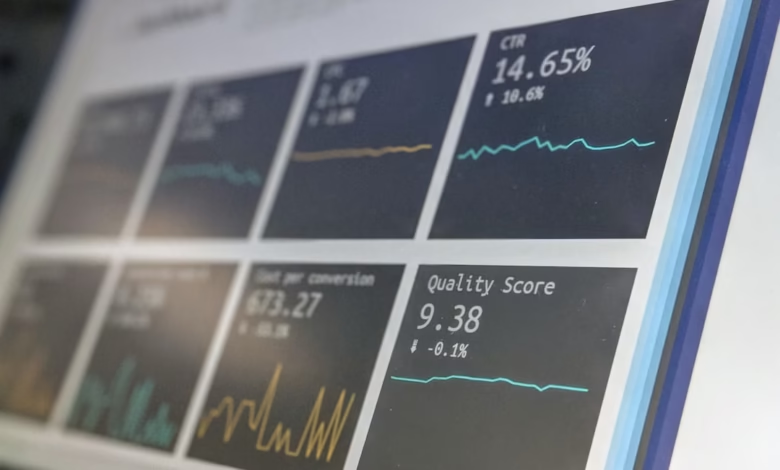Mastering Stock Trading: Essential Strategies and Analysis Techniques for Success in 2024

Stock trading is an exhilarating and potentially lucrative endeavor that involves buying and selling shares of companies in the stock market. As more individuals seek to grow their wealth, understanding the various facets of stock trading has never been more crucial. Whether you’re a seasoned investor or a complete novice, grasping key concepts and strategies can significantly impact your trading success. This article delves into the essentials of stock trading, covering everything from foundational principles to advanced techniques.
We will explore different trading styles, including day trading and swing trading, each with its own unique approach and risk profile. Additionally, we will examine the critical role of market analysis in stock trading, contrasting technical analysis with fundamental analysis to help you make informed decisions. With a focus on risk management and trading psychology, this guide aims to equip you with the knowledge and tools needed to navigate the dynamic world of trading, whether you are interested in forex trading, options trading, or even crypto trading. Join us as we unravel the complexities of stock trading and set you on a path toward financial empowerment.
- 1. Understanding Stock Trading: Key Concepts and Strategies for Success
- 2. Exploring Different Trading Styles: Day Trading, Swing Trading, and Beyond
- 3. The Role of Market Analysis: Technical vs. Fundamental Analysis in Stock Trading
1. Understanding Stock Trading: Key Concepts and Strategies for Success
Understanding stock trading is crucial for anyone looking to navigate the complexities of the financial markets. At its core, stock trading involves buying and selling shares of publicly listed companies, allowing investors to profit from price fluctuations. To succeed in this dynamic environment, traders must grasp several key concepts and strategies.
One fundamental aspect of stock trading is market analysis, which can be divided into two main categories: technical analysis and fundamental analysis. Technical analysis focuses on analyzing price charts and patterns to predict future movements, while fundamental analysis involves evaluating a company's financial health, market position, and economic factors to determine its intrinsic value.
Risk management is another critical component of successful trading. Implementing strategies that limit potential losses, such as setting stop-loss orders, is essential for long-term sustainability. Traders often use leverage trading and margin trading to amplify their potential gains, but it is vital to be aware of the associated risks, as they can also magnify losses.
Traders can adopt various trading strategies based on their goals and risk tolerance. For instance, day trading involves making multiple trades within a single day, capitalizing on short-term price movements, while swing trading focuses on holding positions for several days or weeks to benefit from larger price shifts. Other strategies include scalping, which seeks to exploit small price gaps, and arbitrage trading, which takes advantage of price discrepancies across different markets.
As the financial landscape evolves, new trading avenues have emerged, such as forex trading, crypto trading, and commodities trading. Each of these markets has unique characteristics and requires tailored strategies. For example, algorithmic trading and high-frequency trading utilize advanced algorithms and technology to execute trades at lightning speed, while copy trading and social trading allow less experienced traders to mimic the strategies of successful investors.
Finally, trading psychology plays a crucial role in achieving trading success. Emotions such as fear and greed can significantly impact decision-making. Traders must cultivate discipline and maintain a clear mindset to adhere to their trading strategies, regardless of market fluctuations.
Incorporating these concepts and strategies into your stock trading approach can enhance your chances of success in the ever-changing financial landscape. Whether you are interested in ETF trading, derivatives trading, or binary options, understanding the nuances of each market will empower you to make informed decisions and navigate the world of online trading platforms effectively.
References:
– Author, A. (Year). Title of the source. URL
– Author, B. (Year). Title of the source. URL
– Author, C. (Year). Title of the source. URL
2. Exploring Different Trading Styles: Day Trading, Swing Trading, and Beyond
When it comes to stock trading, various trading styles cater to different investor goals, risk tolerances, and time commitments. Understanding these styles can help traders choose the best approach for their individual needs, from day trading to swing trading and beyond.
Day trading is one of the most well-known styles, where traders buy and sell shares within the same trading day, often executing multiple trades to capitalize on short-term price movements. This requires a deep understanding of market analysis, as day traders rely heavily on technical analysis to identify trends and make quick decisions. High-frequency trading, a subset of day trading, employs complex algorithms to execute trades at lightning speed, taking advantage of minute price changes.
Swing trading, on the other hand, involves holding positions for several days to weeks, aiming to profit from anticipated price swings. Swing traders typically use a combination of technical analysis and fundamental analysis to identify stocks with strong potential for upward movement. This style allows for a more relaxed trading approach compared to day trading, as it does not demand constant monitoring of the market.
Beyond these two popular styles, traders can also explore options trading, futures trading, and crypto trading, each offering unique opportunities and risks. For instance, options trading and futures trading provide leverage, which can enhance potential returns but also increase risk. Similarly, commodities trading and energy trading allow traders to speculate on prices of physical goods, while index trading lets them invest in a collection of stocks to diversify their portfolio.
Another emerging trend in the trading landscape is algorithmic trading, which uses automated systems to execute trades based on predefined criteria. This can improve execution speed and consistency while reducing the emotional impact of trading psychology.
For those looking for a more social approach, copy trading and social trading platforms enable traders to mimic the strategies of successful investors in real time. This can be an excellent way for beginners to learn about trading strategies without the steep learning curve.
Regardless of the chosen trading style, effective risk management is crucial. Traders should establish clear guidelines for allocating capital, using leverage, and setting stop-loss orders to protect against significant losses. Understanding the market through comprehensive market analysis—whether technical or fundamental—will empower traders to make informed decisions.
In conclusion, whether you prefer the fast-paced environment of day trading, the strategic approach of swing trading, or the innovative tactics of algorithmic trading, knowing the various trading styles and their implications can help you navigate the complexities of stock trading successfully. Remember, the key is to choose a style that aligns with your risk tolerance, investment goals, and personal schedule.
3. The Role of Market Analysis: Technical vs. Fundamental Analysis in Stock Trading
In the world of stock trading, market analysis plays a crucial role in guiding investors' decisions. Two primary approaches dominate this analysis: technical analysis and fundamental analysis. Each method offers unique insights into market movements and helps traders develop effective trading strategies.
Technical analysis focuses on historical price movements and trading volumes to forecast future price actions. Traders who employ this approach utilize various charting tools and indicators, such as moving averages and relative strength index (RSI), to identify trends and potential entry and exit points. This method is particularly popular among day traders and swing traders, as it allows them to make quick decisions based on short-term market fluctuations.
On the other hand, fundamental analysis delves into a company's financial health and market position. This approach evaluates a stock's intrinsic value by examining factors such as earnings reports, industry trends, and economic indicators. Investors who favor fundamental analysis often take a long-term view, believing that understanding a company's fundamentals can yield higher returns. This method is also applicable to forex trading, commodities trading, and even crypto trading, where market conditions and economic indicators significantly influence asset values.
When deciding between technical and fundamental analysis, traders should also consider their risk management strategies. A sound approach often involves combining both analyses to develop a comprehensive understanding of market dynamics. For instance, a trader might use technical analysis to determine the best entry and exit points while relying on fundamental analysis to assess the overall market potential. This dual approach can enhance trading strategies, whether in options trading, futures trading, or even in less conventional methods like binary options and arbitrage trading.
Moreover, trading psychology is an important aspect that intertwines with both technical and fundamental analysis. Traders must remain disciplined, stick to their strategies, and manage their emotions, especially in high-frequency trading or algorithmic trading environments where market volatility can be intense.
Ultimately, understanding the role of market analysis, whether through technical analysis or fundamental analysis, equips traders with the tools necessary to navigate the complexities of stock trading and make informed choices. By integrating both approaches and being mindful of trading psychology, investors can create a robust framework for successful trading across various platforms, including online trading platforms, CFD trading, and ETF trading.
In conclusion, stock trading offers a dynamic and potentially lucrative avenue for investors looking to participate in the financial markets. By understanding key concepts such as trading strategies, market analysis, and risk management, traders can navigate the complexities of the stock market more effectively. Whether you choose day trading, swing trading, or delve into other forms like forex trading and options trading, it's essential to develop a personalized approach that aligns with your financial goals and trading psychology.
Technical analysis and fundamental analysis play crucial roles in making informed decisions, allowing traders to capitalize on market trends and price movements. Moreover, as technology continues to evolve, online trading platforms and strategies such as algorithmic trading and social trading have made stock trading more accessible than ever.
As you embark on your trading journey, remember that each trading style—from scalping to index trading—requires a tailored strategy and an understanding of the underlying risks, including leverage and margin trading. By continuously educating yourself and adapting to market changes, you can enhance your opportunities in stock trading while maintaining a disciplined approach to risk management. Embrace the challenge, stay informed, and let your trading strategies evolve with the markets.
References:
(Insert relevant sources here)





